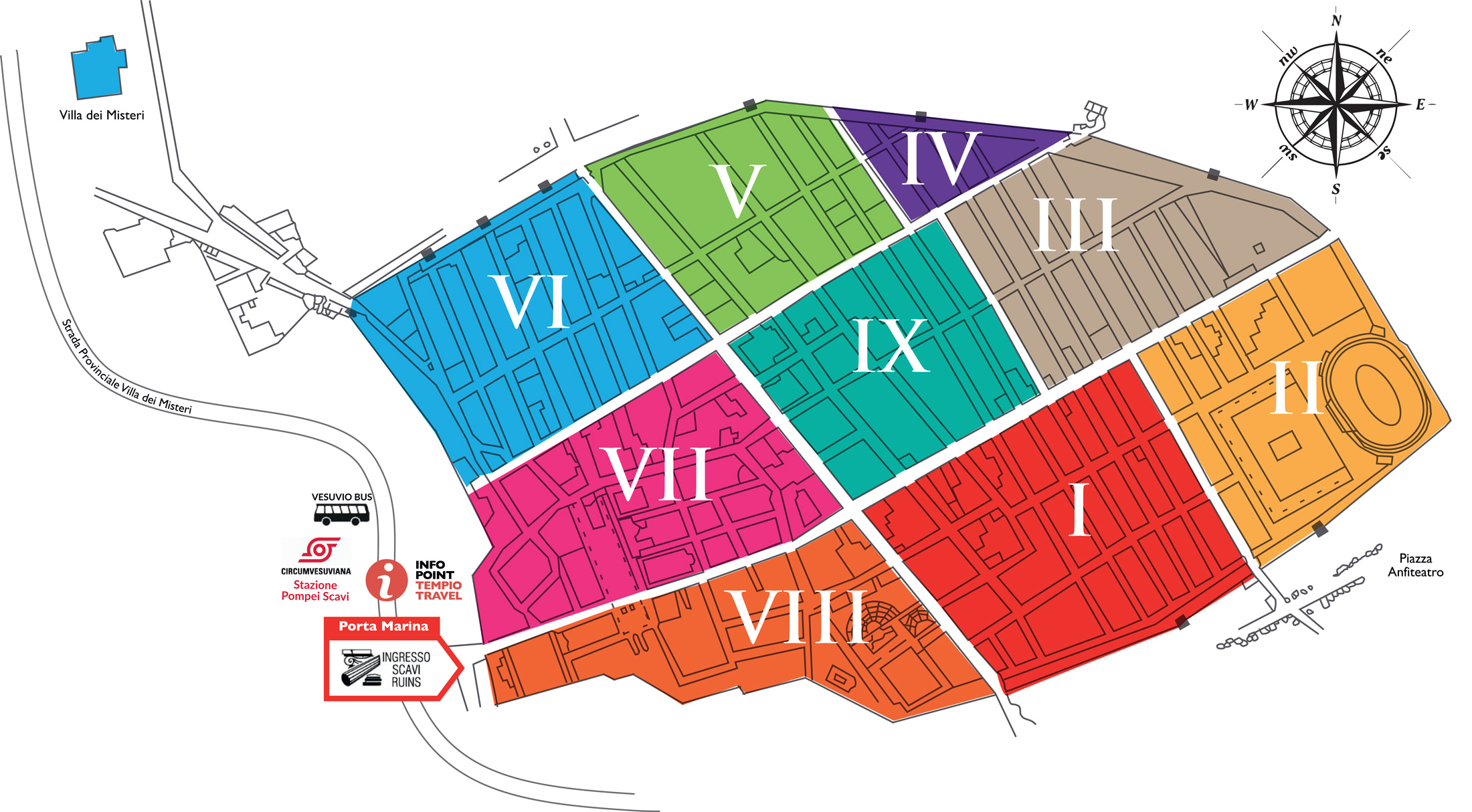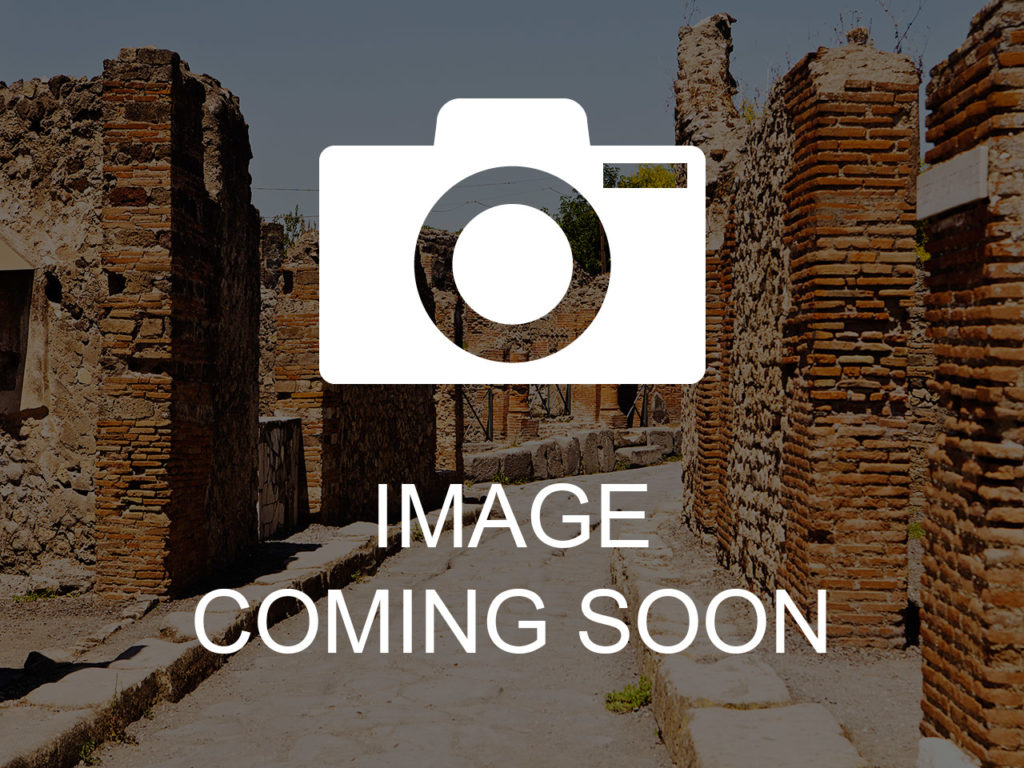Map

REGIO VII
REGIO I
REGIO II
REGIO III
REGIO IV
REGIO V
REGIO VI
REGIO VIII
REGIO IX
REGIO III
House of Trebius Valens
The house belongs to the Trebii family, one of the most powerful of Pompei, and was excavated between 1913 and 1915, during the exploration of Via dell’Abbondanza. A multitude of electoral inscriptions and gladiators games advertisement covered the façade of this house, but they were unfortunately lost in the bombardment of 1943. The structure with atrium and peristyle it’s considered typical for the era of the Roman Republic. The atrium is surrounded by various rooms, decorated with II and IV style paintings. There were water-works in the peristyle and at the back of the garden, under a bower, there was a triclinium. Even from the outside of the house it’s possible to see the amazing decoration of the tablinum, totally covered with a pattern of colored squares: green, yellow, red and white, almost unique. A graffito of the first line of Vergil’s Aeneid was also found here.
Huse of "Moralista"
The house was excavated during the exploration of via dell’Abbondanza between 1916 and 1917. It derives from two different homes being merged. Almost one third is taken up by a large garden that houses a triclinium used for banquets in the summer months. The walls bear painted decoration of flowers and birds but also the inscriptions that gave the house its name. On the wall it’s listed a number of precepts on the expected behavior during festive occasions, like how to avoid disputes, how to ward off the looks of other men’s wives and how to wash one’s feet.
Schola Armaturarum
The Schola Armaturarum or House of Gladiators, was mainly excavated in 1915. After the damage of the bombing of WWII, the structure was restored with reinforced concrete to protect the building but eventually turn up to be too heavy for the ancient walls to support. In November, 6, 2010, the whole Schola collapsed under the pressure of the modern ceiling. During the recent years it’s been partially restored with a complicated operation that involved archeologist and restorers. Originally the building was used as the headquarters of a military association, as indicated by the representations of trophies with weapons at the base originally present on the outer jambs. Inside the affiliates used to gather to plan the military activities and games that would take place in the Great Gym or in the Amphitheater. The House was also used as a storage for weapons: helmets, shield and swords were discovered in a carbonized cabinet; while in the back a big group of amphorae filled with fine wine where recently discovered.


